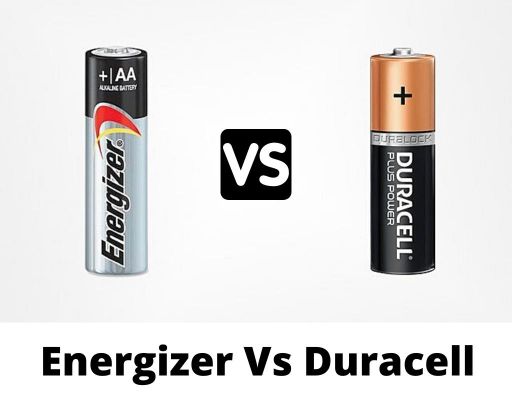Battery terminals are the electrical contacts used to attach a load or charger to a solitary or multiple-cell battery. These battery terminals have an inclusive variety of sizes, designs, and features that are often not well recognized.
The most familiar and popular battery terminals are F1 and F2 battery terminals you may hear earlier. In this article, I’ll discuss everything you need to know about F1 vs F2 terminals and their Uses and Specifications. So, sit tight and read the full article thoroughly to make your concept clearer.
What Is the Difference Between F1 & F2 Battery Terminals?
There are not so many differences between F1 and F2 battery terminals. F2 battery terminals is an updated version of F1 battery terminals. Which is slightly wider than F1. Some key differences between F1 and F2 battery terminals will be discussed here.
| Features | F1 terminals | F2 terminals |
| Measurement | F1 terminals are a little narrower measuring 3/16″ wide (0.187″ / 4.8mm) | F2 terminals are wider measuring 1/4″ wide (0.25″ / 6.35mm) than F1 terminals. |
| Faston Tab Number | Faston Tab No of F1 is 187. | Faston Tab No of F2 is 250. |
| Location | Located on the top of the battery. | Can be found in different areas on the top of the battery. |
| Batteries | Found on Sealed Lead Acid batteries with narrower terminals. | Also found on Sealed Lead Acid batteries with wider terminals. |
| Convertibility | F1 and F2 battery terminals both can be easily converted. | |
| Uses | Used for simple electronic devices like toys, calling bells, etc. | Commonly used in UPS system. |
Most Common Battery Terminals:
There are so many Battery terminals in the market. In this section, we are going to shed light upon some most common battery terminals.
- F1 Faston Battery Terminal: F1 battery terminals are usually used for home alarm systems, fish finders, toys, and many more products like this. The F1 terminal might differ between different sizes of batteries.
- F2 Faston Battery Terminal: F2 battery terminals are usually used in UPS systems. Its positions are generally at the top of the battery.
- Faston Polarized terminal: This battery has two different terminals. Positive Terminal F2 and Negative terminal F1.
- SP terminal: This type of terminal is usually found in a flashlight or lanterns. The positive and negative terminal is fully collapsible for its spring shape.
- WL terminal: This type of terminal is commonly used in home alarm systems and medical devices. It is also known as insulated wire leads.
- PC terminal: PC stands for Pressure Contacts. Its battery terminal is commonly on the side of the battery. An example of a PC terminal battery is PK12V2.3PC.
Some Different Types Of Battery Terminals With Their Conductivity:
| Battery terminals | Conductivity and Security |
| Copper | Conductivity is higher. Used in four-wheelers like cars, SUVs, etc. |
| Pure Copper RoHS | 100% pure copper with the highest conductivity rate. This one is environment friendly. Used in motorcycles, cars, etc. |
| Lead | Made of a lead alloy for hardness, and extensible strength. Used in heavy trucking applications |
| Lead-free (OEM style) | Made of a copper alloy plating with zinc. It has ribs for additional wire gripping. |
| Brass | Low corrosion and low resistance. Which is used in marine applications. |
| Fusion | Fusion is 70% stronger than other crimp methods. Built-in flux and solder. |
| Anti-rotational in-line | Used for light to medium usage. Also made of copper alloy. |
How Do I Choose A Battery Terminal?
There are some key features that you should consider choosing a battery terminal. Which are-
Conductivity
Conductivity is the first priority of choosing battery terminals. A battery terminal needs to have the ability to conduct electricity efficiently from the alternator to the car.
For that, a battery connector must be made of zinc, lead, brass, steel, copper, or a combination of these metals. Make sure they must conduct electricity properly so the vehicle can perform top performance.
Secure Connections
Secure connection is a mandatory feature considering battery terminals. There are several devices on the battery bolts, screws, or wing nuts. Make sure their placement is good enough to work with.
Fitting
The battery terminals must fit your battery cables. If not, then it has no good to use. Choose wisely which will match your expectation.
Functionality
The main functionality of a battery terminal is to power your car battery. Research thoroughly about battery terminals for suggestions on how well the battery connectors work.
Price/Cost
There is various type of battery terminals in the market. Make sure which one fits your requirements and save your money. Remember that, wiser one must be lucky.
Are F1 And F2 Terminals Interchangeable?
Certainly interchangeable! Both F1 and F2 terminals have some differences. F2 terminals are slightly wider than F1 terminals as we have mentioned earlier. Both F1 and F2 terminals are interchangeable.
When we are talking about T1/F1 or T2/F2, they are not interchangeable. The connector of T2/F2 may work with the T1/F1 terminals. But T2/F2 terminal will not work with the T1/F1 terminals. But the adapter can be converted to T1/F1 from T2/F2 and vice versa.
Bottom L ine
People nowadays are aware that well-conditioned battery terminals are as necessary as a battery. A good connection with your battery and other accessories will expand your battery life and top performance. For that, quality battery terminals like F1 or F2 are essential for your battery health.
As we have discussed F1 vs F2 battery terminals, there are not so many differences though. But an updated one is always a better option. So, we have done our job. Now the decision is yours to make which one you should go with.
Related Posts:


